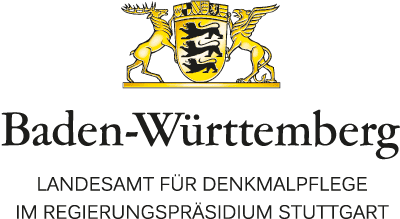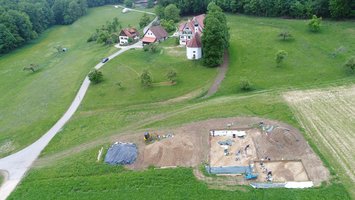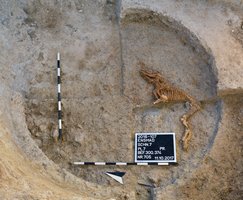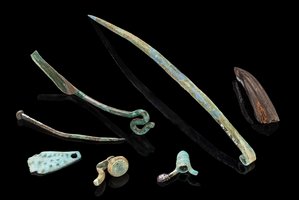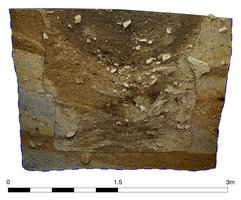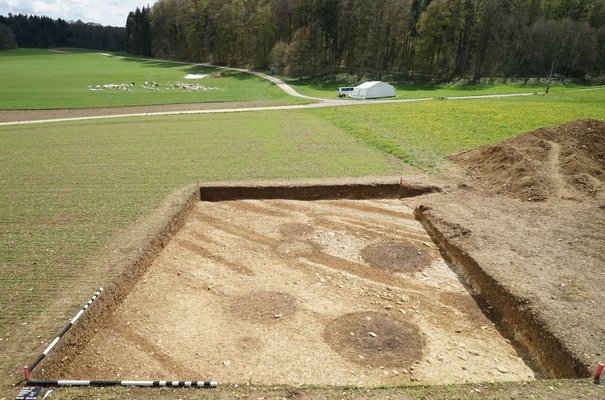"Ensmad" – An Early Celtic Settlement with Storage Pits
Between 2016 and 2018, excavations took place in Langenenslingen-Ittenhausen "Ensmad", a high valley on the southern edge of the Swabian Alb, about 3.5km north of the Alte Burg. In 1995 Ferdinand Pfannstiel found Bronze Age and Hallstatt finds from a pile of spoil created during the construction of a road. On the basis of geomagnetic measurements, several excavation areas were subsequently laid out. In the northwest of the investigation area, near the present-day pilgrimage chapel, about 50 settlement features were found on an area of about 700 m². Some of these were large storage pits up to 3.8m in diameter and more than 2m deep, whilst others were shallower post holes. On the bottom of one of the storage pits a complete pig skeleton was found, which was probably placed here deliberately.
Among the Iron Age finds, some noteworthy objects stand out. Fragments of several Hallstatt brooches, a bronze rattle plate and an arm ring fragment made of saproplite (oil shale) prove that the area was used at the same time as the Iron Age settlement on the Heuneburg. Additionally, early and middle La Tène objects were recovered, such as graphite clay wares, several iron wire brooches and fragments of blue glass arm rings. The pig skeleton also dates to this later period oft he Iron Age. "Ensmad" is thus an important site for the period after the abandonment of the Heuneburg; a period which is far less well researched in this area than the Hallstatt period.
Other pottery and metal finds indicate an older Bronze Age settlement, as well as continued use of the area into the Early Middle Ages. Above all, the recovered Hallstatt period finds suggest that the inhabitants of the settlement enjoyed a certain level of prosperity.
References: Hansen et al. 2017a; Hansen et al. 2018a.

